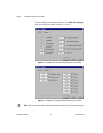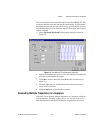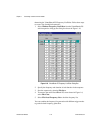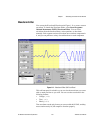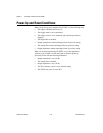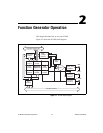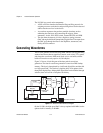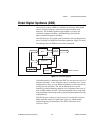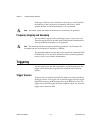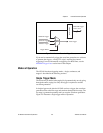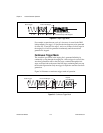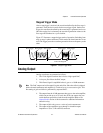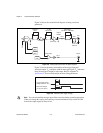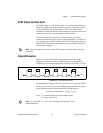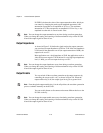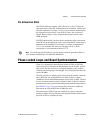
Chapter 2 Function Generator Operation
NI 5401 User Manual 2-4 www.natinst.com
Each stage is made up of two instructions: the frequency, which specifies
the frequency of the waveform to be generated, and the time, which
specifies the time for which the frequency is to be generated.
Note You cannot specify the number of iterations for a waveform to be generated.
Frequency Hopping and Sweeping
You can define a staging list for performing frequency hops and sweeps.
The entire staging list uses the same buffer loaded into the lookup memory.
All stages differ in the frequency to be generated.
Note The minimum time that a frequency should be generated is 2 µs. Therefore, the
maximum hop rate from frequency to frequency is 500 kHz.
The maximum number of stages that can be stored in the instruction FIFO
for DDS mode is 512. For more information on the waveform generation
process, refer to your software documentation.
Triggering
You use triggering to start and step through a waveform generation. The
trigger sources and modes of operation are explained in the following
sections.
Trigger Sources
Trigger sources are software selectable. By default, the software produces
the trigger sources. You can also use an external trigger from a pin on the
digital I/O connector, the RTSI trigger lines on the RTSI bus, or the TTL
trigger lines on the PXI trigger bus on the backplane. Figure 2-4 shows the
trigger sources for the NI 5401.



